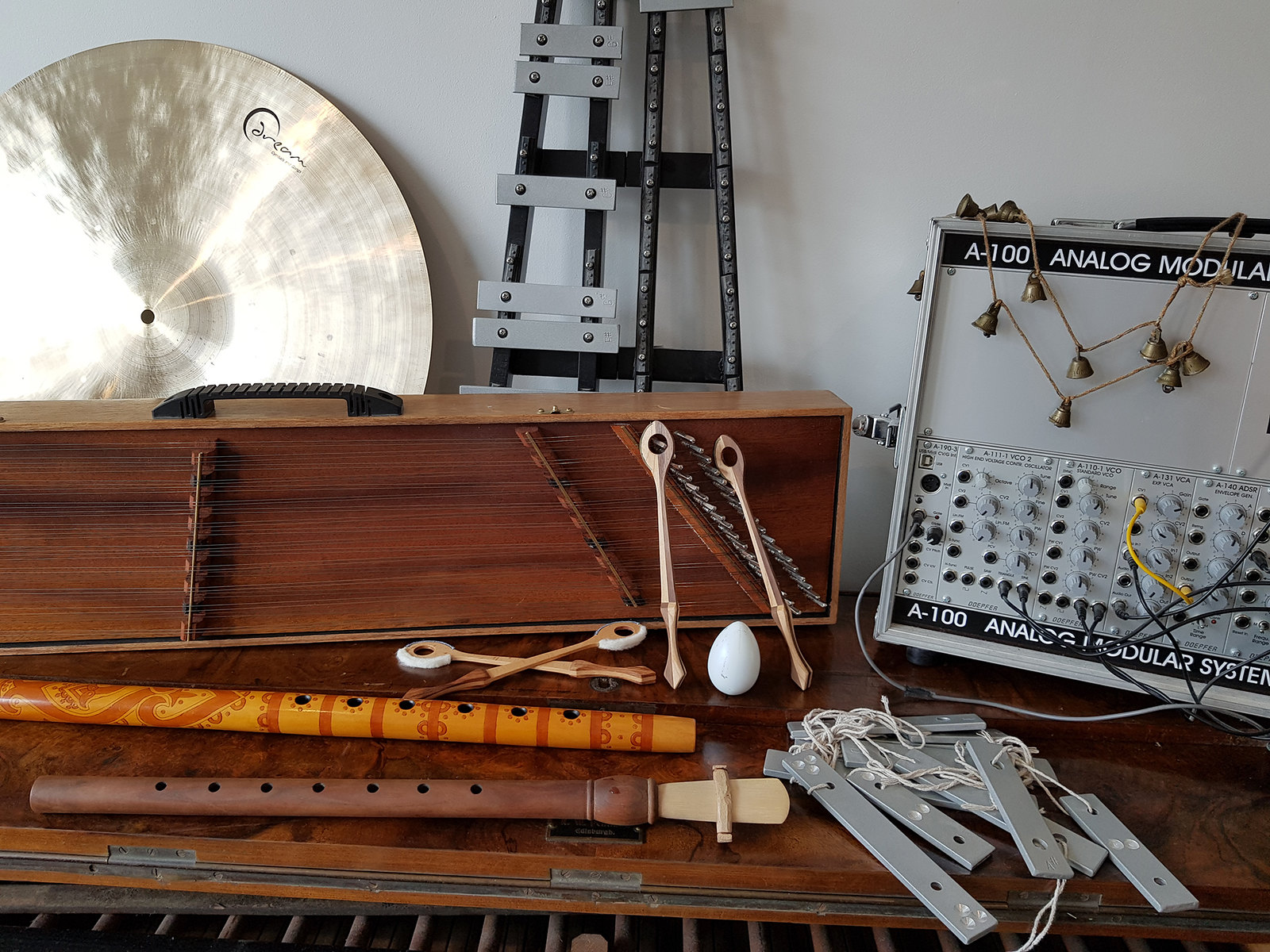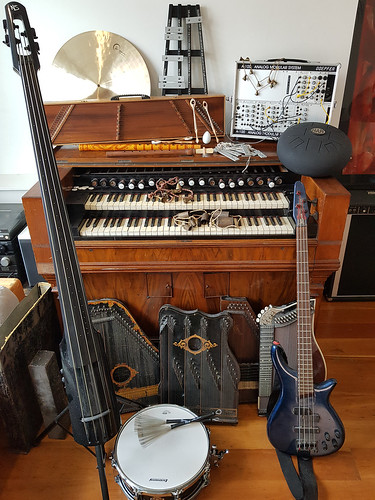Composing music, like any creative task, is about making a series of choices — you reach a fork in the road and choose a direction to take. For every choice you make, at least one other option remains unexplored — perhaps there are parallel universes where all of these other compositions exist.
But composing music using carefully-controlled randomisation to make choices between several different ideas allows you to explore multiple options, and many different versions of a piece of music can exist at once.
When I first played an early demo of Creaks, finally launching on PlayStation 4 today, it struck me that you can die a lot, but you never run out of lives.
So it’s possible that the player has to replay a level from the start many times while trying to solve the puzzle – and I wanted to avoid the music being repeated exactly the same way, every time you restart a level, which can quickly lead to listener fatigue.
This was my first game soundtrack, so discovering software for creating adaptive music for games was a revelation which opened up a whole new world of composition techniques. My inexperience with game soundtracks combined with a background in many genres and styles of music, and my interest in using technology to manipulate real instrumental recordings (such as ‘automatic remixing’ and ‘infinite soundscapes’ projects), has hopefully led to some interesting and innovative processes.
I explained what I wanted to do to a game sound designer friend (Ali Tocher of LookListenAudio), who then introduced me to the amazing FMOD Studio software. Thanks to this, I was able to create music for each level which has a high degree of randomisation built-in – there are so many variables that there are thousands of possible combinations and variations (of structure, arrangement, effects, etc.) — and the music will never sound exactly the same twice. It self-generates arrangements, and can play infinitely without repeating. The structure of each piece is determined by the player’s progress through each level – moving on to the next section of the piece as each stage of the puzzle is solved.
There’s something very exciting for me about knowing that every time the music is heard in the game it has never been heard like that before, and never will be again.
This ‘living soundtrack’ was incredibly inspirational to create. When it came to making locked-down versions for a conventional OST release, I found a new challenge in trying to make decisions about the structure and arrangements that were as effective as those created by the conditional logic which I programmed into the game music. It was also hard to condense over 100 pieces of infinitely-long music (which lasts a minimum of about 6 hours in the game), into a single album.
At the same time, it was very enjoyable remixing these infinite and randomised compositions into short album tracks, with freedom from the complex set of rules that I had to construct, and bringing out characteristics which are underplayed in the game – for example, beats are much more present in the OST, whereas in the game they are mostly only used as end-of-level celebrations, to avoid distracting you while solving the puzzles.
Another thing that struck me about Amanita’s work is the use of hand-drawn artwork, which is animated and manipulated electronically — a marriage of analog and digital procedures.
This fits well with my own ethos of never using fake synthesised instruments – always working with real musicians and instruments, but using composition and production techniques from sample-based music.
Each of the characters in the game is represented by a different instrument – for example, here are some of the different zithers I used for the main hero character:
The music in the game reflects the progression through time in the artwork’s aesthetics, and becomes more complex as the puzzles also become more intricate.
We start in a primitive world, where the music is mostly created from simple ancient styles of instruments (zithers, flutes, percussion) and some home-made instruments such as this harp made from an egg-slicer:
Then we go into a gothic/baroque world, filled with bells, organs and choirs, and these tunable chimes I made from a deconstructed glockenspiel:
Then a Classical world, dominated by pianos and strings, and an Electronic world filled with textures, rhythms, basslines and melodies created on a modular synth, finally ending up in a futuristic dark magical world full of bass clarinet.
The OST features a broad cross-section of these styles. I had the great pleasure of featuring some of my favourite regular Hidden Orchestra musicians, as well as some new players. Though I am playing more twenty instruments myself – here is a selection of some of them.
I’m a Classically-trained composer, and self-taught producer, with a wide range of experience in many different musical styles and sound art projects, and so I was able to draw on a lot of different influences and ideas to create a soundtrack which uses multiple genres.
For example, the Classical/Folk technique of ‘canon’ allowed me to take a single short melody and turn it into an infinite composition. This can be heard in a number of electronic tracks featured in the inventor’s futuristic Workshop world, but also the Classical cello piece in the Palace world, called ‘One and One’ on the OST.
This piece is essentially a single rising solo cello line lasting two minutes, which I recorded at three different octave pitches. Every 40 seconds, another layer is triggered – choosing between the three different pitches, silence, and a slightly ornate version of the melody – with the result that you have an infinite cello trio piece that is constantly changing, but uses only a very small amount of raw material.
Another example of a technique I developed for the game, using the incredible FMOD Studio software (primarily designed for creating things like organic-sounding gunshots and atmospheres, but with immense capabilities for reactive music), can be heard in the track ‘Lifting’. The track is based around rippling piano chords – I recorded 15 different chords which the software plays in a random order – and also in three layers of different speeds and pitches (half-speed, normal, double-speed). This is combined with eight different modular synth patterns, four organ chords, and a selection of percussion and beats. On top of all this, there are dozens of different cello melodies, which the software also selects at random.
The randomisation is all within the range of carefully-defined limits and probabilities, which evolve throughout the piece.
So very quickly, you have thousands/millions of different combinations of sounds, harmonies, melodies, and structure – it will always sound like the same identifiable piece of music, but will never be exactly the same twice – much like the experience of going to see a band or musician play live – they play a song you know and love, but part of the joy of the experience is that it might be longer, or have a different beat, or an improvised solo, or a different arrangement.



